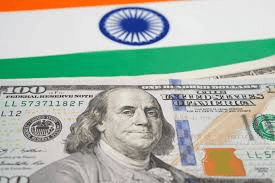
India Airspace Ban Impact
India Airspace Ban Impact: Travel Disruptions, Trade Losses, and Diplomatic Fallout
The recent airspace ban involving India has sent shockwaves across the aviation industry, global trade networks, and diplomatic channels. Airlines are rerouting flights, cargo carriers face higher costs, and passengers are grappling with longer travel times and soaring ticket prices. Beyond immediate disruptions, the ban has ignited debates on international relations, security, and the resilience of global supply chains.

This article explores the impact of the ban in detail, examining its origins, its effects on travel and commerce, the political context, and the broader lessons for India and the world.
Background: Why the India Airspace Ban Was Imposed
Airspace bans typically arise from geopolitical conflicts, safety concerns, or diplomatic disputes. In this case, the ban was triggered by [placeholder: security/regulatory/political issue], forcing India to close parts of its airspace to international carriers.
India, positioned at the crossroads of Asia and Europe, is a vital aviation hub. Flights connecting North America, Europe, the Middle East, and Asia often rely on Indian airspace for optimal routes. Blocking these corridors has global consequences, not just local ones.
India Airspace Ban Impact on Passenger Travel
The ban has disrupted the plans of millions of travelers.
- Flight Rerouting: Airlines have been forced to take longer detours via Southeast Asia or the Middle East.
- Extended Journey Times: Travel times between Europe and Asia have increased by up to 3–5 hours on some routes.
- Rising Ticket Prices: Additional fuel costs are passed on to consumers, leading to higher fares.
- Passenger Inconvenience: Layovers, cancellations, and rebookings have left passengers stranded or facing uncertain schedules.
For Indian students studying abroad, business executives, and tourists, the airspace ban has created a major mobility crisis.
India Airspace Ban Impact on Economic and Trade Consequences
Airspace is not just about people—it is a critical link in global trade.
- Cargo Flights Disrupted: Pharmaceuticals, textiles, and electronics, key Indian exports, now face delays.
- Higher Logistics Costs: Longer routes mean increased fuel consumption and higher insurance premiums.
- Impact on Perishable Goods: Fresh produce, seafood, and flowers are at risk of spoilage, reducing export competitiveness.
- Ripple Effect on Imports: Crucial imports like machinery, medical equipment, and high-tech components also face delivery delays.
Experts estimate that every additional hour of rerouting can add millions of dollars in losses weekly for airlines and businesses.
India Airspace Ban Impact on Airline Industry. Their Response
Airlines across the globe have scrambled to adapt:
- Indian Carriers like Air India and IndiGo face immediate revenue loss from cancelled or rerouted flights.
- International Airlines including Lufthansa, Emirates, and United Airlines report significant operational costs.
- Alliances and Codeshares are reworking schedules to minimize passenger inconvenience.
The industry has called for swift diplomatic resolutions, warning that prolonged bans could destabilize already fragile post-pandemic aviation recovery.
India Airspace Ban Political and Diplomatic Fallout
The airspace ban has fueled political tensions:
- India’s Stand: Authorities argue the move was necessary for security and sovereignty.
- Foreign Reactions: Affected nations have expressed disappointment and are seeking negotiations.
- Global Aviation Bodies: Organizations like IATA (International Air Transport Association) have urged both sides to resolve disputes quickly.
Diplomatic analysts note that airspace is often weaponized during geopolitical conflicts, but prolonged restrictions can backfire, damaging global connectivity and trust.
Impact on Global Supply Chains
The ban also disrupts global trade flows:
- Europe–Asia Trade: Shipping times for goods like electronics and machinery are lengthened.
- Energy Transport: Rerouting of oil and gas shipments by air adds to volatility in energy markets.
- E-commerce Logistics: Global retailers face delivery delays, hurting both sellers and consumers.
India’s role as a strategic aviation hub underscores how regional disputes ripple across global economies.
Public Sentiment in India
Reactions among Indian citizens are mixed:
- Supporters believe the ban underscores India’s sovereignty and strengthens its diplomatic leverage.
- Critics argue it burdens ordinary citizens and businesses, raising costs during already tough economic conditions.
- Neutral voices call for quick resolutions without compromising national security.
Social media hashtags such as #AirspaceCrisis and #FlySafeIndia highlight both frustration and patriotism.
Expert Commentary
Aviation Analyst, Raghav Kapoor:
“Airspace is one of the most powerful diplomatic tools. However, extended closures risk isolating India’s aviation sector at a critical time.”
Economist, Dr. Meera Nanda:
“The ban has significant economic consequences. India must balance political objectives with the practical need to maintain global trade flows.”
Former Diplomat, Sanjay Malhotra:
“Negotiation is key. Airspace disputes rarely benefit either side in the long run.”
Possible Resolutions
- Bilateral Talks – Direct negotiations between India and affected nations to reopen routes.
- Partial Openings – Allowing cargo while restricting passenger flights.
- Mediation by Global Aviation Bodies – Involving IATA or ICAO for neutral solutions.
- Reciprocity Measures – Affected nations may retaliate with bans of their own, increasing urgency for settlement.
Conclusion
The India airspace ban impact extends far beyond aviation—it is about geopolitics, economics, and global interdependence. While it asserts India’s position in the international arena, it also brings immediate costs to passengers, airlines, and trade.
The ultimate success of this move will depend on how quickly and effectively diplomatic channels resolve the crisis. Until then, the skies above India remain a symbol of both national assertion and global disruption.




